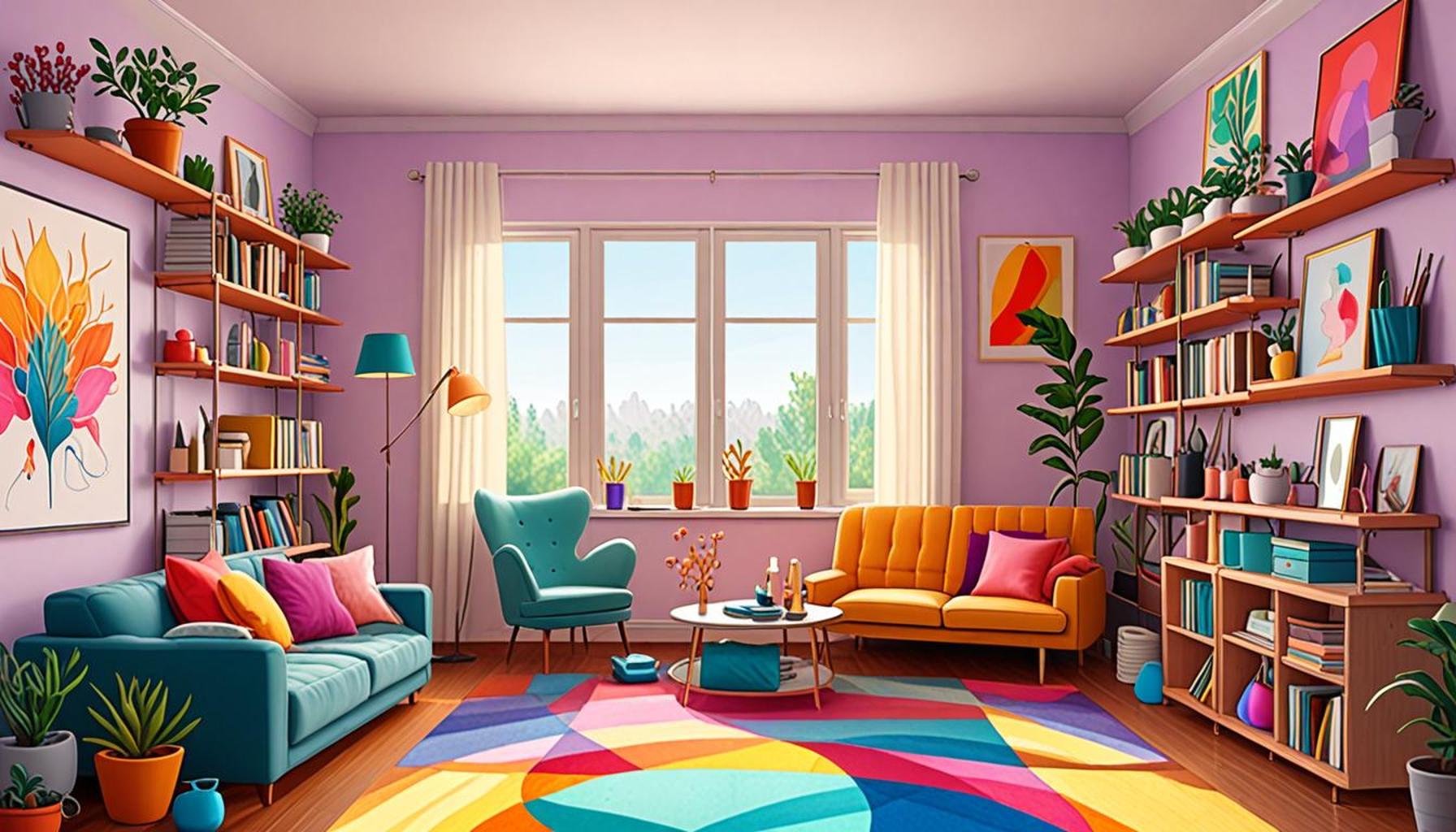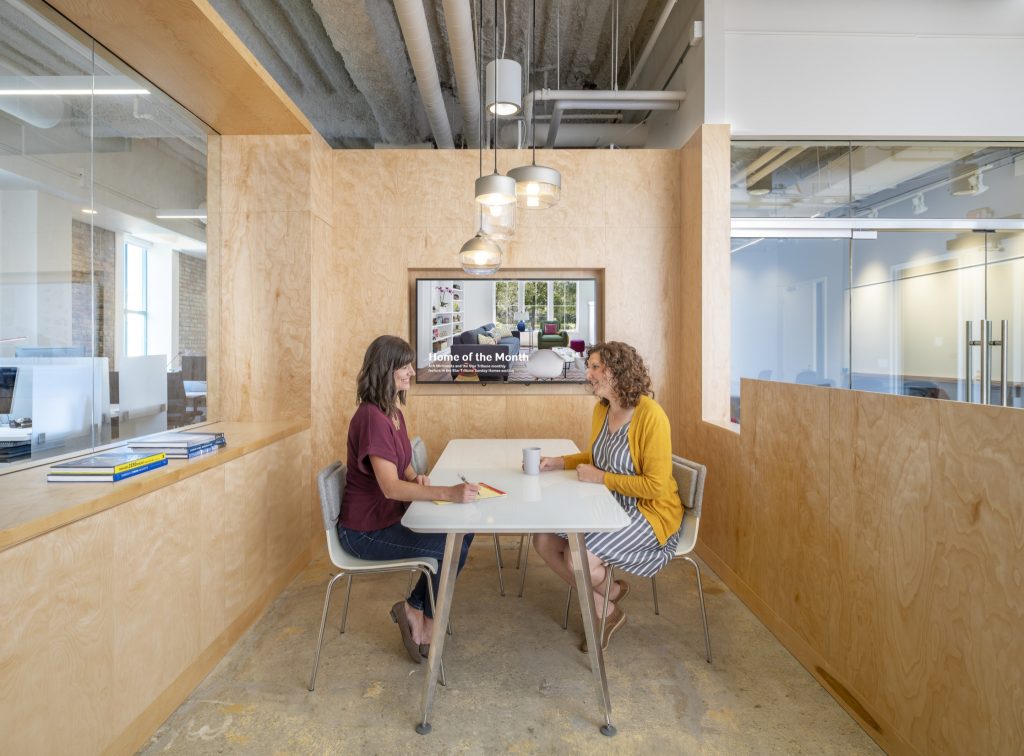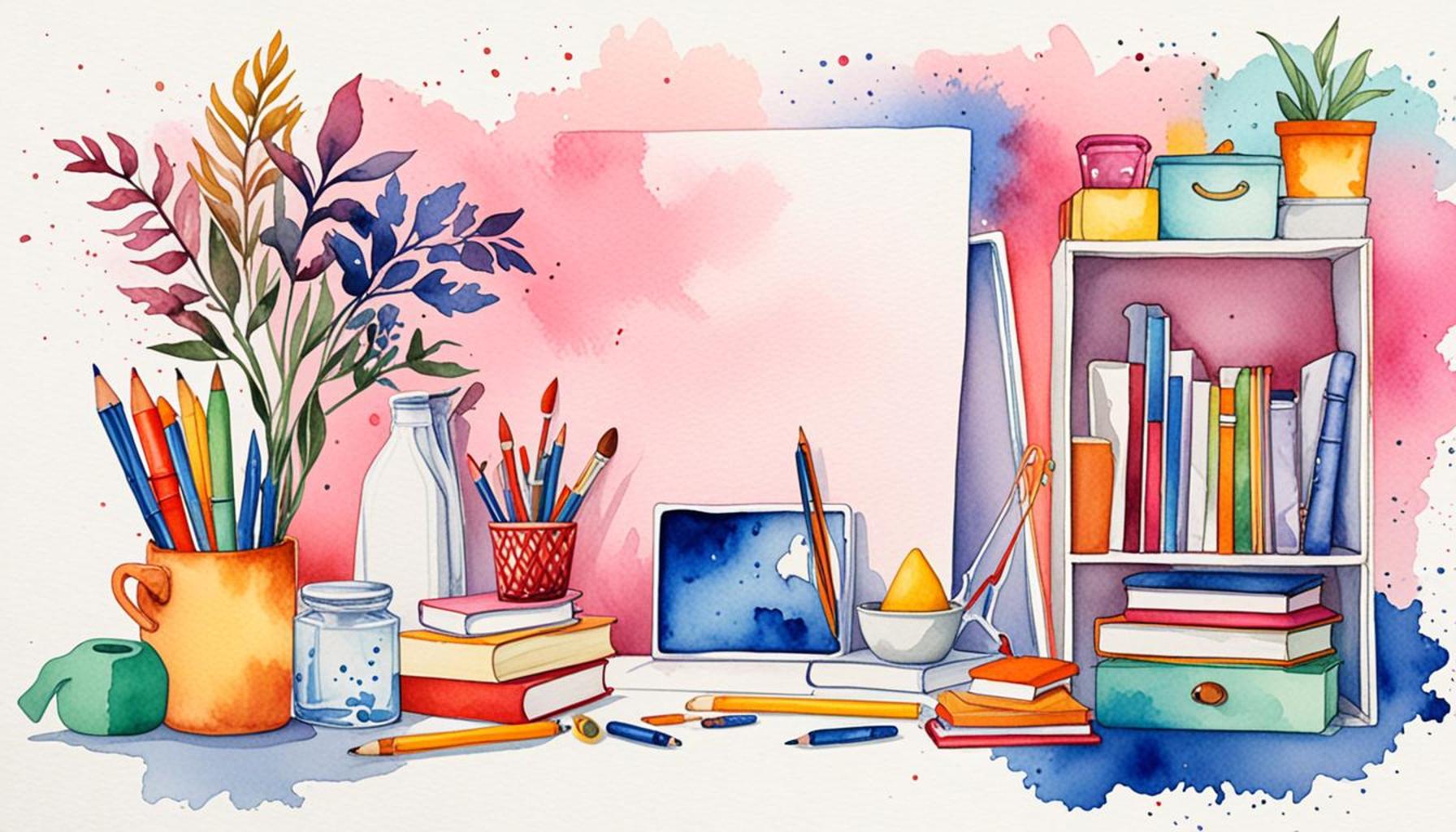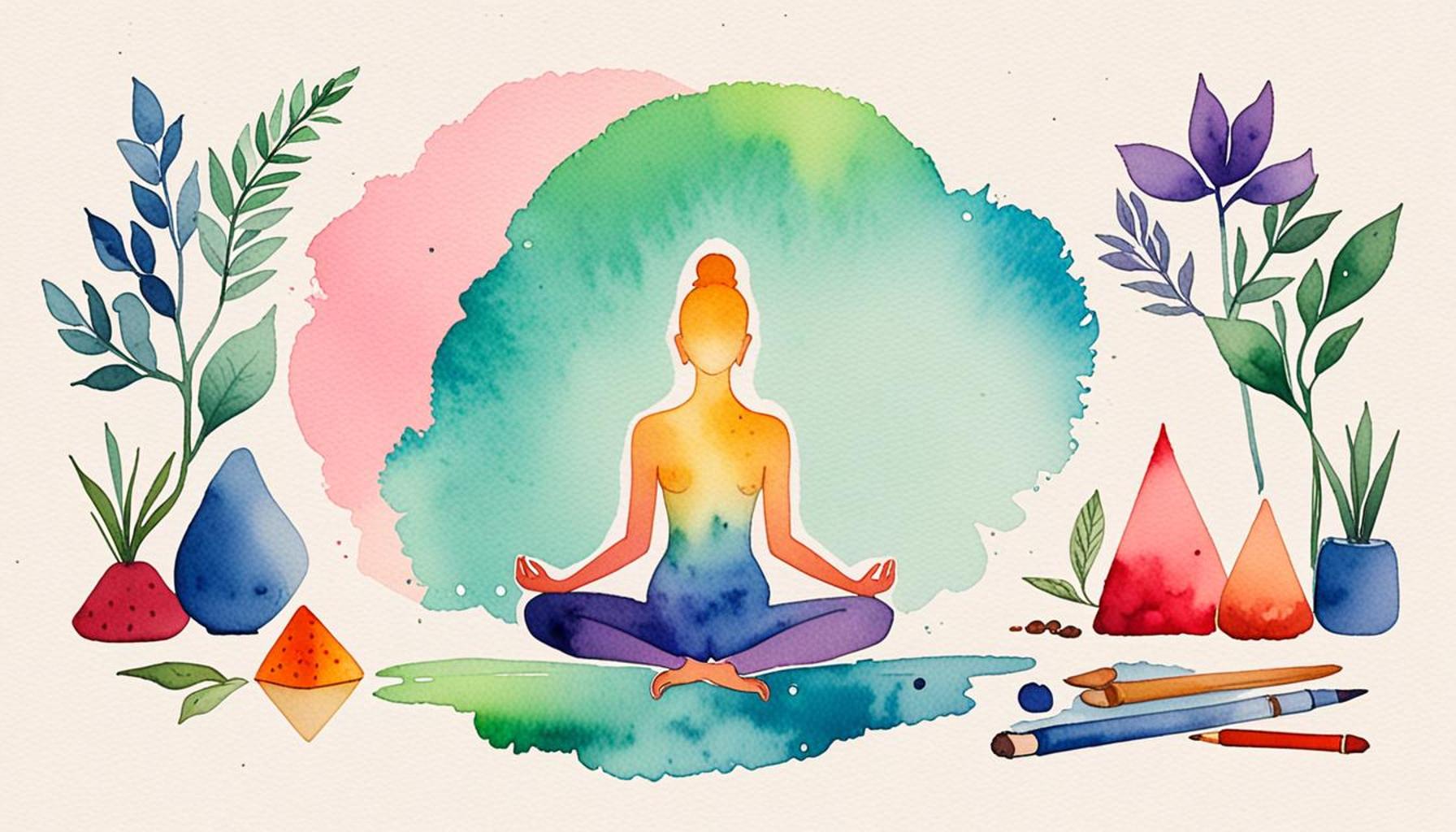The Relationship between Intentional Living and Physical Spaces: Organizing for Mental Clarity

Understanding How Our Environments Shape Our Thoughts
In today’s fast-paced world, where distractions are abundant and stress can feel overwhelming, the pursuit of mental clarity is more important than ever. It is becoming increasingly clear that the physical spaces we occupy play a significant role in shaping our mental well-being. This growing awareness has birthed the movement of intentional living, where individuals purposefully design their environments to nurture a focused and clear mindset.
This connection between our surroundings and mental health prompts us to critically evaluate various factors that can enhance our mental space.
- Decluttering: Research has shown that a cluttered environment can lead to increased anxiety and a sense of being overwhelmed. By reducing physical clutter, individuals often experience a significant decrease in mental clutter. For instance, taking the time to tidy up a workspace can clear not just the desk but also the mind, leading to greater productivity.
- Organization: A well-organized space fosters focus. When personal and professional items have designated places, it reduces the time spent searching for things and enhances overall efficiency. For example, using clear storage bins can help keep track of essential items while contributing to a visually organized environment.
- Aesthetics: The visual aspects of a space significantly influence mood and creativity. Studies suggest that environments infused with natural elements, such as plants, or those painted in soft, calming colors can enhance feelings of relaxation and comfort. A living room adorned with warm hues and inviting decor not only creates a welcoming atmosphere but can also uplift one’s spirit.
Furthermore, specific design elements like color, layout, and lighting can dramatically affect our psychological state. For instance, a sunlit room filled with large windows can boost energy levels, while a dimly lit area with soothing paint colors can create a tranquil atmosphere perfect for relaxation or meditation. By understanding these connections, individuals can design personalized spaces that genuinely reflect their unique personalities and support their mental health.
As you explore the intricate relationship between intentional living and your surroundings, consider how enhancing the organization and aesthetics of your environment can lead to transformative changes in your mindset. Embrace the journey of creating spaces that not only represent you but also invite clarity and focus into your daily life. This guide will provide you with practical strategies for tailoring your environment to achieve greater mental clarity, and inspire you to delve deeper into the relationship between the physical and mental realms.
DISCOVER MORE: Click here for effective decluttering strategies

Creating Harmony Through Decluttering
The act of decluttering is more than just a means to achieve a tidy space; it is a vital practice in the journey toward intentional living. With studies indicating that a disorganized environment can amplify stress and anxiety, the need to examine our surroundings takes on new urgency. The psychological impact of clutter cannot be overstated; it serves as a visual reminder of unfinished tasks and unfulfilled responsibilities. When faced with a chaotic environment, individuals may feel an overwhelming sense of unease, leading to diminished focus and productivity.
Imagine entering a workspace that is free of unnecessary distractions – a clean desk with only the essentials displayed can foster a sense of calm and invite creativity. This is a clear example of how mental clarity can be enhanced through simple yet effective decluttering techniques. Here are a few practical steps to consider when embarking on your decluttering journey:
- Start Small: Focus on a specific area, such as a single drawer or corner of a room. This manageable approach can help avoid feelings of overwhelm and create a sense of accomplishment.
- Be Ruthless: Assess each item critically. If it doesn’t serve a purpose or bring you joy, consider letting it go. This is a central tenet of intentional living.
- Establish a Routine: To maintain a clutter-free environment, create a regular decluttering schedule. Setting aside time weekly or monthly can ensure that clutter doesn’t accumulate.
By unapologetically questioning the necessity of possessions, individuals can create an environment conducive to mental well-being. The physical act of removing items opens up both mental and emotional space that allows for deeper focus and reflection.
The Power of Organization
Once physical clutter has been addressed, the next step toward achieving a harmonious living space is organization. An organized environment supports efficiency and reduces the cognitive load associated with misplaced items. When everything has its designated place, it becomes significantly easier to locate items, leading to improved time management and reduced stress.
Utilizing organizational tools can also make a profound impact. Consider incorporating the following elements into your space:
- Categorized Storage: Use labeled bins, shelves, or drawers to group similar items together. This not only aids in organization but also makes retrieval effortless.
- Vertical Space Utilization: Take advantage of vertical space by installing shelves or hooks. This frees up valuable floor space and adds a visual appeal to your environment.
- Digital Organization: Don’t neglect digital clutter. Organizing files and emails can significantly enhance productivity and mental clarity.
By intentionally organizing our physical spaces, we create environments that mirror our values and priorities, ultimately supporting our mental clarity and the pursuit of intentional living. As you embark on this transformative journey, remember that every small adjustment can lead to greater peace of mind and a clearer path to achieving your goals.
While the relationship between intentional living and physical spaces is profound, understanding how they interact is crucial for achieving mental clarity. Our environments, whether home, workplace, or public spaces, significantly influence our thoughts, feelings, and behaviors. When we prioritize intentional living, we take deliberate actions to align our physical surroundings with our values and needs, which can lead to remarkable improvements in mental clarity.One compelling aspect of this relationship is the concept of minimalism. Adopting a minimalist approach to our living spaces can dramatically reduce distractions and foster a sense of peace. By eliminating clutter and surrounding ourselves with only the most meaningful objects, we can create an environment conducive to focus and creativity. This passive yet powerful supportive framework encourages mindfulness and intentional choice in what we allow into our lives.Moreover, organizing our spaces can have a profound impact on our productivity. Studies show that a well-structured workspace can facilitate better concentration and improved workflow. By designating areas for specific tasks or activities, individuals can train their minds to associate certain physical spaces with focused work or relaxation, thereby enhancing efficiency and overall satisfaction.In addition to spatial organization, the aesthetic elements of our physical spaces cannot be overlooked. The choice of colors, textures, and even the arrangement of furniture can evoke various emotional responses. For instance, soft, natural tones may promote tranquility, while vibrant colors can stimulate creativity. By thoughtfully curating our environments, we actively influence our mental states and help to define our personal narratives.Engaging in the practice of intentional living encourages us to reflect on the items and arrangements within our physical spaces continually. This ongoing assessment allows for adjustments that keep our environments aligned with our evolving goals and aspirations. It is a dynamic process that not only nurtures mental clarity but also fosters a deeper connection to our lived experiences.Ultimately, the synergy between intentional living and physical spaces serves as a powerful tool for achieving mental clarity. By recognizing and harnessing this relationship, individuals can cultivate environments that support their personal journeys, promote well-being, and enhance their ability to live fully in the present moment. This journey into the heart of our spaces beckons further exploration and understanding, inviting us to redefine how we inhabit our worlds.
DISCOVER MORE: Click here to learn how space optimization can change your life
Designing Spaces for Intentional Living
Beyond decluttering and organizing, the design of our physical spaces plays a crucial role in fostering intentional living and enhancing mental clarity. The layout, color schemes, and even the materials used in our environments can significantly impact our emotional and mental states. Intentional design considers how our surroundings can positively influence our thoughts, feelings, and behaviors.
For instance, the concept of biophilic design emphasizes the connection between humans and nature. Incorporating natural elements, such as plants, water features, or natural light, can reduce stress and enhance cognitive function. Several studies, including one published in the journal “Environmental Science & Technology,” have shown that simply viewing nature can lead to significant improvements in mental well-being. Whether it’s through large windows that invite in sunlight or strategically placed houseplants, integrating elements of nature into our daily environments can promote tranquility and clarity.
Moreover, the layout of a space can either hinder or facilitate flow and productivity. An open concept area encourages collaboration and socialization, while a more traditional segmented environment might cater to those requiring solitude for concentration. The key is to assess how we engage with our activities and interactions throughout the day, adapting our environment accordingly. Creating intentional zones within spaces, such as a reading nook or a focused work area, establishes boundaries that can help mentally separate different activities.
The Role of Minimalism
In many ways, minimalism has emerged as a philosophy deeply intertwined with the concept of intentional living. This lifestyle choice advocates for simplicity and an emphasis on quality over quantity, promoting mindful consumption and appreciation for the things we possess. The minimalistic approach begins with asking ourselves what truly matters, enabling us to curate spaces reflective of our values and needs.
Implementing minimalism into our physical spaces can significantly improve mental clarity. By reducing visual clutter and distractions, we allow our minds to focus on what we deem essential. A study published in the “Journal of Environmental Psychology” found that individuals in minimalist environments reported higher levels of focus and lower levels of anxiety compared to those in cluttered settings. Minimalism invites individuals to prioritize experiences and relationships over material possession, leading to a fulfilled life rather than one bogged down by excess.
Personalizing Your Space
While organization and cleanliness pave the way for mental clarity, personalizing your physical space can add a layer of comfort and meaning. Surrounding ourselves with items that tell our unique stories can provide motivation and inspiration. Customizing your environment with cherished photographs, artwork, or mementos creates an emotional resonance that contributes to a sense of identity and belonging.
Incorporating your personality into your design aesthetic encourages an emotional connection to the space, reinforcing the idea of living intentionally. Consider incorporating items that symbolize your aspirations, goals, or cherished memories. Additionally, ensuring that the space is welcoming and reflects your style can make it more enjoyable and conducive to productive work or relaxation.
In sum, the interplay between our physical environments and our mental states is profoundly significant. By mindfully designing our spaces, we can enhance our capacity for mental clarity, creativity, and overall well-being, all foundational elements of intentional living.
DISCOVER MORE: Click here to learn how to optimize your space
Conclusion
As we explore the relationship between intentional living and physical spaces, it becomes clear that our environments influence our mental clarity and overall well-being. By organizing, designing, and personalizing our spaces thoughtfully, we create conditions that foster tranquility, focus, and emotional resonance. The principles of biophilic design and minimalism invite us to embrace nature and simplicity, transforming cluttered areas into sanctuaries of peace.
Moreover, recognizing the spatial dynamics of our surroundings empowers us to construct dedicated zones for various activities, ultimately promoting a harmonious flow in our daily lives. Personalized spaces, enriched with meaningful items, serve not just as a backdrop for our routines but as a source of motivation and inspiration. This alignment between our physical environments and our internal states is fundamental to achieving an intentional way of living.
In conclusion, by intentionally organizing our physical spaces, we can pave the way for mental clarity, allowing us to focus on what truly matters. It encourages individuals to reflect on their values and aspirations, thus leading to a more fulfilling and harmonious life. As we navigate our busy lives, let us remember the profound impact our environments have on our mental health—making intentional living not just a concept, but a tangible and achievable reality.


